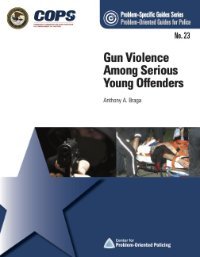By Sara Haylock, Talia Boshari, Emma C. Alexander, Ameeta Kumar , Logan Manikam and Richard Pinder
Background: Since 2013, the number of violent crimes and offences by sharp instruments have increased continually, following a previous decrease, with the majority of cases occurring among young people and in London. There is limited understanding surrounding the drivers influencing this change in trends, with mostly American-based research identifying risk factors. Methods: The aim of this review is to identify and synthesise evidence from a range of literature to identify risk factors associated with weapon-related crime, for young people (aged 10–24 years) within the UK. A search strategy was generated to conduct a systematic search of published and grey literature within four databases (EMBASE, Medline, PsycINFO, and OpenGrey), identifying papers within a UK-context. Abstracts and full texts were screened by two independent reviewers to assess eligibility for inclusion, namely study focus in line with the objectives of the review. Weight of Evidence approach was utilised to assess paper quality, resulting in inclusion of 16 papers. Thematic analysis was conducted for studies to identity and categorise risk factors according to the WHO ecological model. Results: No association was found between gender or ethnicity and youth violence, contrasting current understanding shown within media. Multiple research papers identified adverse childhood experiences and poor mental health as positively associated with youth and gang violence. It was suggested that community and societal risk factors, such as discrimination and economic inequality, were frequently linked to youth violence. A small number of studies were included within the review as this is a growing field of research, which may have led to a constrained number of risk factors identified. Due to heterogeneity of studies, a meta-analysis could not be conducted. As many studies displayed positive results, publication bias may be present. Conclusions: Several risk factors were identified, with evidence currently heterogeneous with minimal high-quality studies. However, findings highlight key areas for future research, including the link between poor mental health and knife-crime, and the trajectory into gangs. Risk factors should help identify high-risk individuals, targeting them within mitigation strategies to prevent involvement within crime. This should contribute to efforts aimed at reducing the rising crime rates within UK.
BMC Public Health (2020) 20:1451




